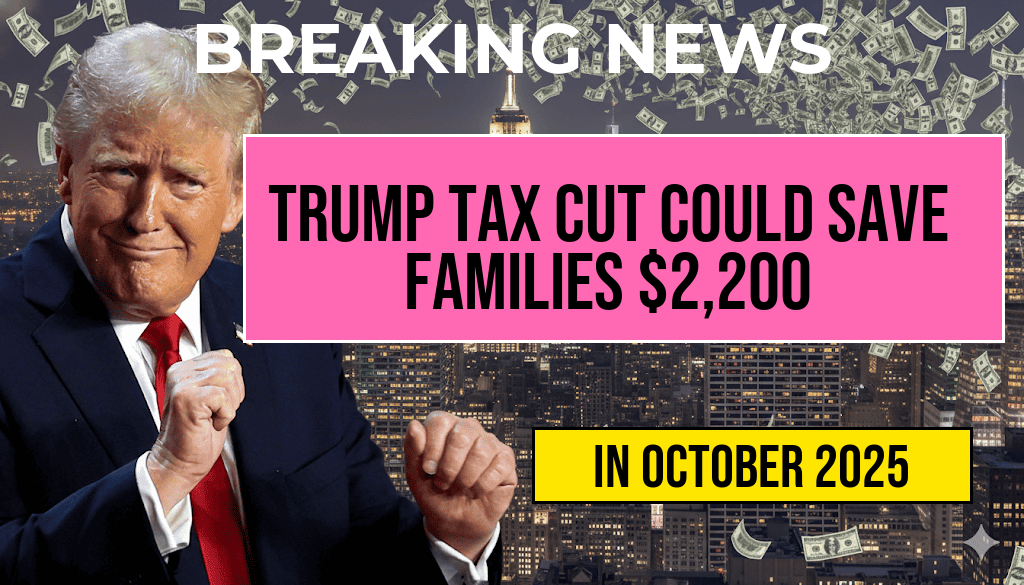New Washington Post Analysis Reveals Modest Tax Cuts, but Significant Child Tax Benefits for Families
A recent analysis by The Washington Post highlights that while the latest tax legislation introduced by the Biden administration does not constitute the largest tax cuts in recent U.S. history, it could still provide substantial financial relief to families—offering savings of up to $2,200 per child. The report emphasizes that the changes primarily focus on expanding the Child Tax Credit (CTC), making it more accessible to lower-income families, rather than delivering sweeping tax reductions across all income brackets.
This nuanced approach aims to target economic support toward households with children, especially those who previously faced limitations in claiming full benefits. As policymakers debate the scope of tax reforms, families across the country are scrutinizing how these measures might influence their financial stability, particularly in the context of ongoing inflation and rising living costs.
Expanding Child Tax Credit: A Focused Relief for Families
The core of the recent tax adjustments centers on the enhancement of the Child Tax Credit, which was temporarily expanded during the COVID-19 pandemic. Under the new provisions, eligible families can receive up to $3,000 per child aged 6 to 17, and $3,600 for children under 6, with the payments distributed monthly rather than as a lump sum during tax season.
According to the analysis, these enhancements could translate into significant annual savings for families, particularly those with multiple children. For example, a family with three children under the age of 6 might see a combined benefit of approximately $10,800 per year. The actual amount varies depending on income, filing status, and the number of children, but the overall intent is to provide consistent financial support to help with childcare, education, and daily expenses.
Tax Cuts Are Not the Largest in Recent History
While the increased Child Tax Credit garners much attention, the analysis points out that the recent legislation does not match the scale of historic tax cuts, such as those enacted during the Trump administration in 2017, which included broad reductions across income brackets.
The Post’s review notes that the current measures are more targeted, aiming to reduce child poverty and support working families rather than significantly lowering tax burdens for higher-income households. This approach reflects a shift toward social programs designed to alleviate the financial strain on families with children, rather than broad-based tax cuts that benefit all taxpayers equally.
Potential Savings for Families: Up to $2,200 Per Child
One of the most compelling figures emerging from the analysis is that families could see up to $2,200 in annual savings per child, depending on their household income and composition. This figure accounts for the expanded Child Tax Credit, as well as other provisions such as increased Earned Income Tax Credit (EITC) eligibility and adjustments to income thresholds.
| Household Income | Number of Children | Potential Annual Savings |
|---|---|---|
| $30,000 | 2 | $4,400 |
| $70,000 | 3 | $6,600 |
| $100,000 | 1 | $2,200 |
The figures illustrate that lower-income families tend to benefit the most, with larger per-child savings that can help offset costs for essentials like housing, healthcare, and education. Higher-income families still receive benefits, though the magnitude decreases as income rises.
Policy Implications and Public Reception
Policy analysts suggest that these targeted improvements in the Child Tax Credit could have long-term impacts on reducing child poverty rates, which remain stubbornly high despite overall economic growth. The Congressional Budget Office (CBO) estimates that expanding the CTC could reduce child poverty by approximately 40%, emphasizing the role of such measures in addressing income inequality.
Public response remains mixed. Advocacy groups applaud the targeted relief, viewing it as a pragmatic step toward supporting working families, while critics argue that the benefits do not go far enough or that the measures are temporary. Some policymakers are calling for permanent extensions of these credits to ensure ongoing support amid economic uncertainties.
Looking Ahead: Potential for Further Reforms
As legislative debates continue, experts highlight the possibility of further reforms aimed at making the Child Tax Credit and related benefits more accessible and comprehensive. Proposed measures include increasing the credit amount, expanding eligibility criteria, and making the enhancements permanent to provide continuous support.
For families seeking to understand how these changes might impact their tax filings, resources such as the IRS website and reputable financial advisors can offer guidance. More information on the history and structure of the Child Tax Credit can be found at Wikipedia’s page on Child Tax Credit.
Summary
While the recent tax legislation may not mark the largest tax cuts in American history, its targeted expansion of the Child Tax Credit could deliver meaningful savings—up to $2,200 per child—to millions of families. The focus on supporting households with children aims to address existing economic disparities and provide relief amid ongoing economic challenges. As policymakers evaluate future steps, these measures underscore a shift toward more strategic, family-centered fiscal policies.
Frequently Asked Questions
What is the main focus of the WaPo analysis regarding Trump’s tax cut?
The analysis examines how Trump’s tax cut impacts families, highlighting that while it may not be the largest tax cut overall, families could see savings of up to $2,200 per child.
How much could families potentially save per child under the new tax policies?
Families could potentially save up to $2,200 per child, depending on their income level and tax situation.
Does the analysis suggest that Trump’s tax cut is the largest in history?
No, the analysis indicates that Trump’s tax cut is not the largest in history, but it still provides significant benefits to families.
Who benefits the most from the tax cut according to the analysis?
Families with children and those in certain income brackets could benefit the most, with savings potentially reaching up to $2,200 per child.
What is the overall significance of the tax cut for families?
The significance lies in the potential for substantial financial relief for families, especially those with children, making it a notable aspect of the broader tax policy changes.










